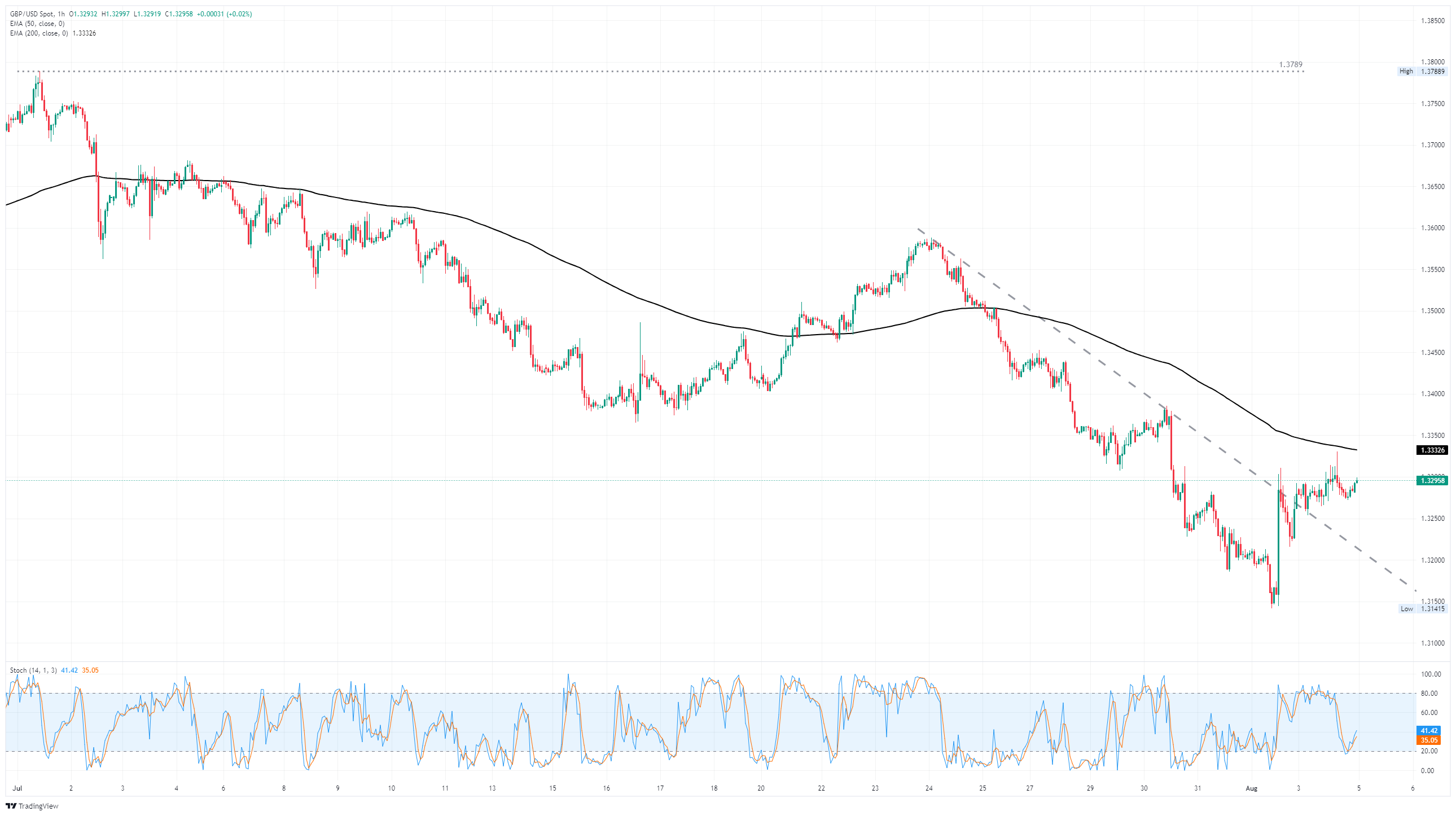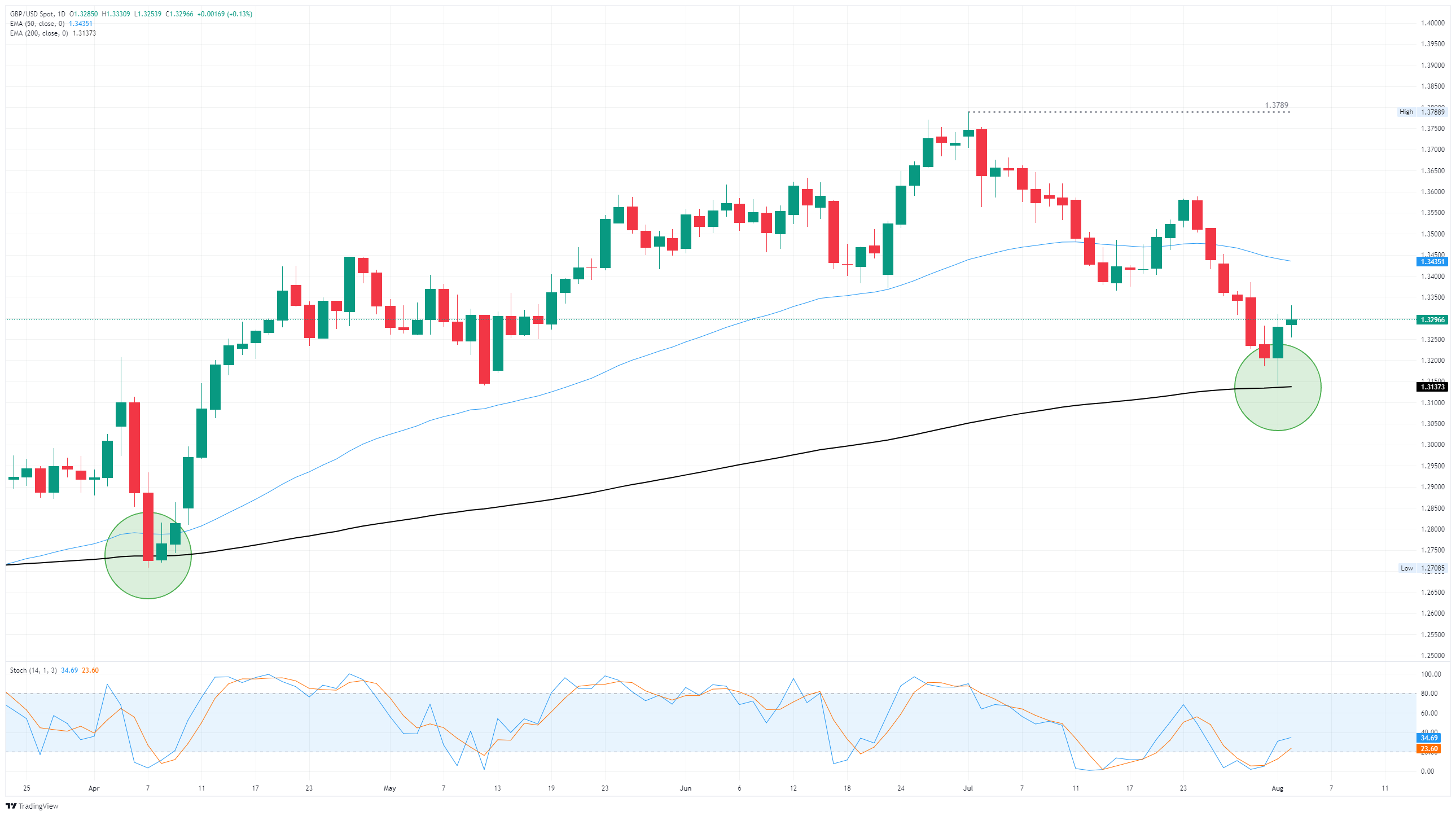GBP/USD looks upwards ahead of looming BoE rate cut
- GBP/USD treaded water on Monday as markets take a breather.
- Global markets saw a sharp rebalancing of sentiment after a softening in US labor numbers.
- The BoE’s latest interest rate decision is on the cards for this Thursday.
GBP/USD pumped the brakes on Monday, holding steady near the 1.3300 handle after a sharp rebound brought on by fresh Greenback weakness thanks to an unexpected softening in US labor data late last week. The data docket is relatively quiet this week on both of the Atlantic, though the Bank of England’s (BoE) latest interest rate decision looms ahead on Thursday.
The Pound Sterling (GBP) held onto late-week gains through Monday’s market session, and remains bolted to the 1.3300 region after a sharp technical bounce near the 200-day Exponential Moving Average (EMA) around 1.3150. A turnaround in Greenback flows helped to snap a six-day losing streak in the Cable, but now the burden is on GBP bulls to keep things keel-side down heading into the BoE’s next rate call.
Next up: BoE rate cut?
The BoE is poised to trim interest rates on Thursday, with median market forecasts expecting the Monetary Policy Committee (MPC) to vote 7-to-3 in favor of a quarter-point trim, bringing the BoE’s main reference rate down to 4.0% from 4.25%. If the BoE matches market expectations and cuts interest rates this week, this will be the seventh rate cut from the UK’s central bank since the BoE started trimming rates in July of 2024.
GBP/USD hourly chart

GBP/USD daily chart

Pound Sterling FAQs
The Pound Sterling (GBP) is the oldest currency in the world (886 AD) and the official currency of the United Kingdom. It is the fourth most traded unit for foreign exchange (FX) in the world, accounting for 12% of all transactions, averaging $630 billion a day, according to 2022 data. Its key trading pairs are GBP/USD, also known as ‘Cable’, which accounts for 11% of FX, GBP/JPY, or the ‘Dragon’ as it is known by traders (3%), and EUR/GBP (2%). The Pound Sterling is issued by the Bank of England (BoE).
The single most important factor influencing the value of the Pound Sterling is monetary policy decided by the Bank of England. The BoE bases its decisions on whether it has achieved its primary goal of “price stability” – a steady inflation rate of around 2%. Its primary tool for achieving this is the adjustment of interest rates. When inflation is too high, the BoE will try to rein it in by raising interest rates, making it more expensive for people and businesses to access credit. This is generally positive for GBP, as higher interest rates make the UK a more attractive place for global investors to park their money. When inflation falls too low it is a sign economic growth is slowing. In this scenario, the BoE will consider lowering interest rates to cheapen credit so businesses will borrow more to invest in growth-generating projects.
Data releases gauge the health of the economy and can impact the value of the Pound Sterling. Indicators such as GDP, Manufacturing and Services PMIs, and employment can all influence the direction of the GBP. A strong economy is good for Sterling. Not only does it attract more foreign investment but it may encourage the BoE to put up interest rates, which will directly strengthen GBP. Otherwise, if economic data is weak, the Pound Sterling is likely to fall.
Another significant data release for the Pound Sterling is the Trade Balance. This indicator measures the difference between what a country earns from its exports and what it spends on imports over a given period. If a country produces highly sought-after exports, its currency will benefit purely from the extra demand created from foreign buyers seeking to purchase these goods. Therefore, a positive net Trade Balance strengthens a currency and vice versa for a negative balance.






